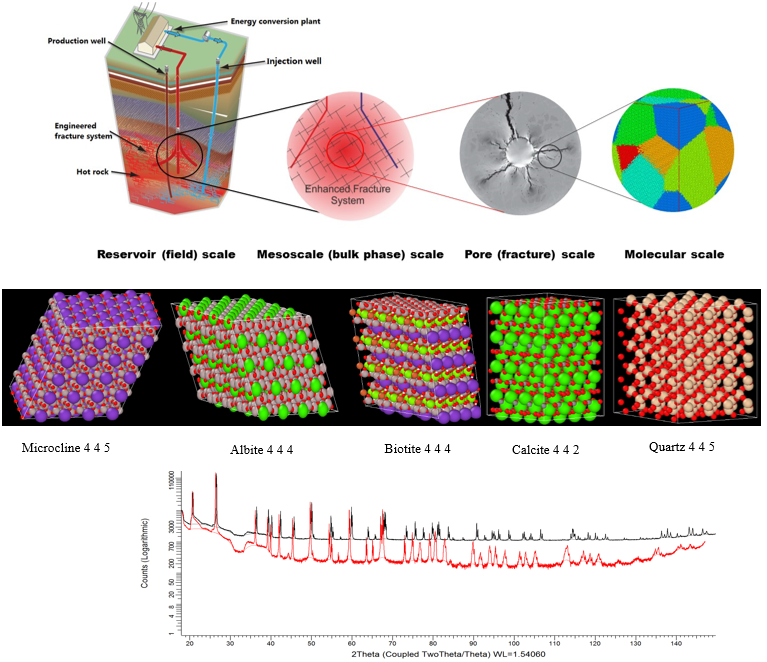CO2-enhanced geothermal system would use the CO2 instead of water as heat transmission fluid, and it would achieve geologic sequestration of CO2 as an ancillary benefit. However, the microscale mechanical for the fluid-rock chemical and mechanical interactions are still ambiguous and unsolved.
Before the production of the geothermal well, artificially induced fractures is of significant importance for the permeability enhancement and reservoir stimulation. In the absence of thermal shock or high thermal gradients, thermal stresses are generated by two main mechanisms: (1) mismatch in thermal expansion coefficients between different minerals and (2) thermal expansion anisotropy within single minerals. Thermal expansion coefficient (both linear and volume) and its anisotropy can be gained through the quantitative phase analysis methods (Rietveld structure refinement using the software TOPAS) via powder XRD. After that, Particle flow code (PFC) will be adopted to investigate the fracture pattern of granite using the thermal expansion coefficient of each composite. This project would be beneficial at explaining the rock failure mechanisms under the impact of temperature (both high temperature and cryogenic temperature).
Molecular dynamics (MD) is a computer simulation method for studying the physical movements of atoms and molecules and it acts as a bridge between microscopic length and time scales and the macroscopic world of the laboratory. MD simulation can be adopted to study the mechanical and thermodynamics properties of granite minerals and the reservoir fluids. We have applied the LAMMPS to study the stress-strain curve of granite minerals and the corresponding Poisson’s ratio. Our next step is to construct the multi-phase crystalline mineral (granite or other reservoir rocks) and study the mechanical properties (basic mechanical parameters and fracture initiation and propagation). The interaction mechanism (diffusion, chemical reaction, interfacial tension, etc.) between fluids (water or supercritical carbon dioxide) and rocks will be spelled out after that. Experimental methods, for example, XRD, SEM, CT and nanoindentation will be adopted to validate our simulation results.

